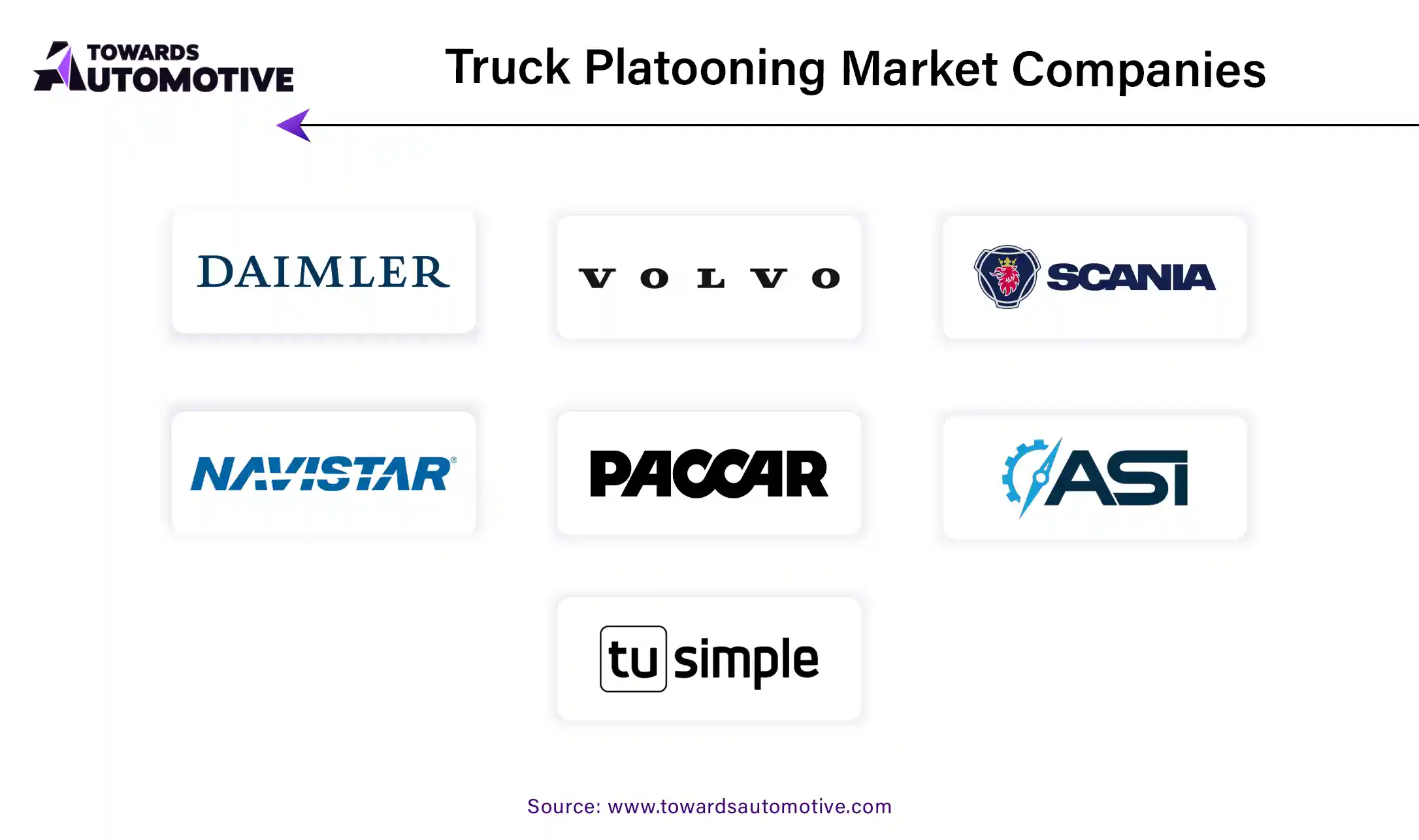August 2025
The truck platooning market is projected to reach USD 23.05 billion by 2034, growing from USD 2.86 billion in 2025, at a CAGR of 26.09% during the forecast period from 2025 to 2034.
Unlock Infinite Advantages: Subscribe to Annual Membership
Truck platooning represents a transformative advancement in long-haul transportation, offering significant improvements in fuel efficiency, safety, and operational cost savings. With the integration of connectivity, automation, and vehicle-to-vehicle (V2V) communication technologies, the truck platooning market is witnessing rapid expansion, driven by factors such as the need for fuel savings, driver shortages, and sustainability goals.


The truck platooning market comprises a diverse ecosystem of truck manufacturers, technology providers, fleet operators, and research institutions driving innovation and market growth.
Some of the prominent players in the market include:
By Vehicle Type
By Technology
By Geography
August 2025
June 2025
June 2025
June 2025
We offer automotive expertise for market projections and customizable research, adaptable to diverse strategic approaches.
Contact Us